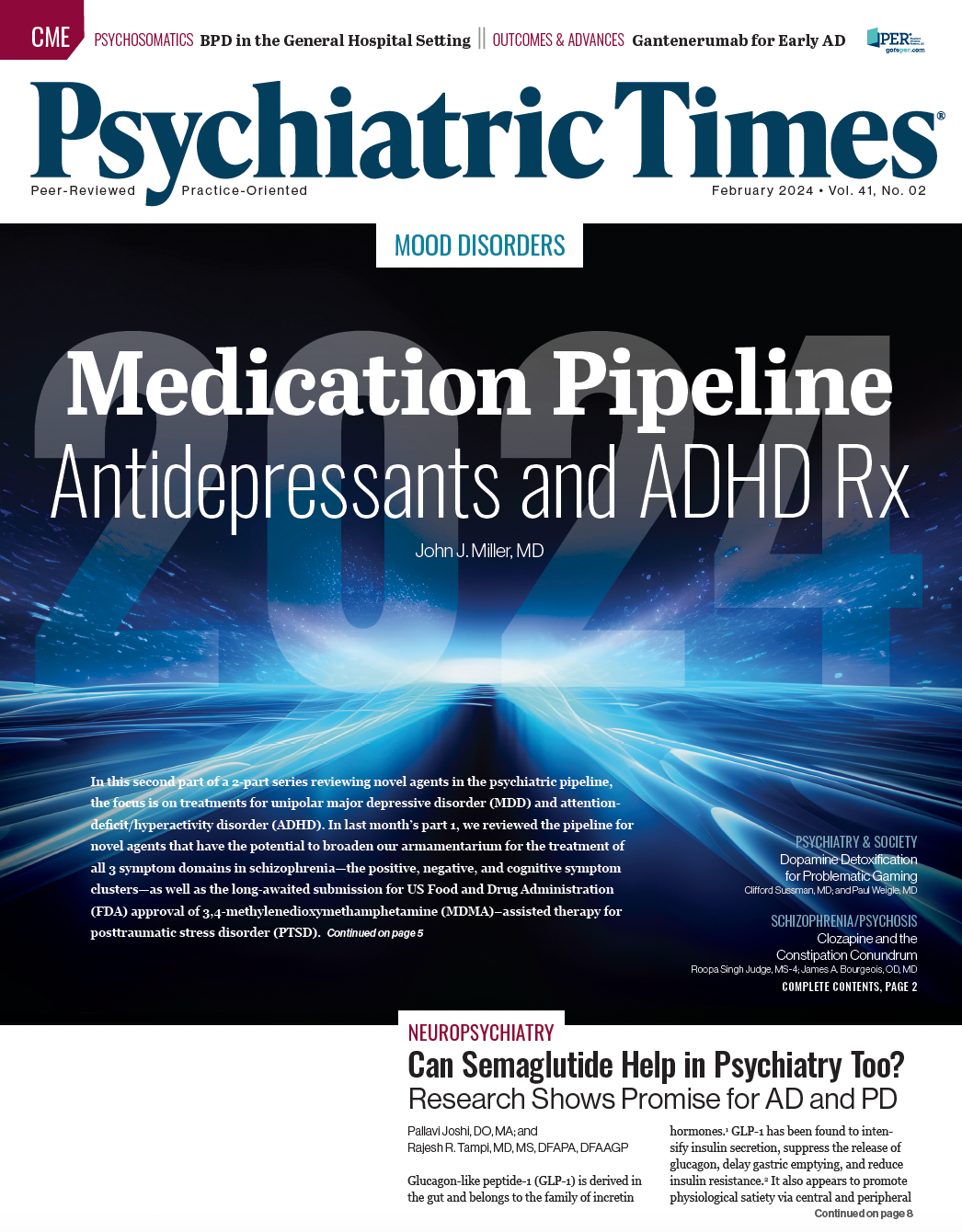Publication
Article
Psychiatric Times
An Update on Personality Disorders and Common Comorbidities
Author(s):
In patients seen in the medical setting, as many as 20% have personality disorders.
Anbuselvan/AdobeStock

SPECIAL REPORT: PERSONALITY DISORDERS
Descriptions of character and temperament are ancient, found in Chinese and Greek writings from more than 2000 years ago.1 Hippocrates proposed a humoral theory of temperaments (sanguine, choleric, melancholic, and phlegmatic) in 400 BC. Emil Kraepelin classified patients with manic depression as depressive, hypomanic, or irritable.
Our current taxonomy of personality disorders derives from Kurt Schneider’s ‘‘psychopathic personalities,’’ which start in childhood and include depressive personality (depressive personality disorder, anankastic personality), obsessive-compulsive personality disorder, attention-seeking personality (histrionic personality disorder, labile personality), borderline personality disorder, and affectionless personality (antisocial and schizoid personality disorders).2
Diagnostic classification of personality disorders has evolved since the introduction of the DSM-I in 1952. The DSM-I described 12 personality disturbances. In DSM-II, there were 10 personality diagnoses (Table). DSM-III introduced the 3 clusters of personality disorders. DSM-IV removed the passive-aggressive category as a diagnosis.
DSM-5-TR defines a personality disorder as “an enduring pattern of inner experience and behavior that deviates markedly from the norms and expectations of the individual’s culture, is pervasive and inflexible, has an onset in adolescence or early adulthood, is stable over time, and leads to distress or impairment.”3 Overall, DSM-5-TR notes the prevalence of personality disorders to be 10.5%, with variations across countries and ethnic groups.3 The World Health Organization estimates the prevalence of personality disorders to be 6.1%.4
Table. The 10 Personality Diagnoses in DSM-II

In DSM-5-TR, the 10 different personality disorders remain in the original 3 clusters; however, the features in each cluster are not mutually exclusive.4
Individuals may have features or traits of different clusters:
- Cluster A includes individuals who might be described as odd/eccentric: paranoid, schizoid, and schizotypal personality disorders.
- Cluster B includes individuals who seem very emotional or dramatic: antisocial, borderline, histrionic, and narcissistic personality disorders.
- Cluster C includes individuals who are anxious or fearful: avoidant, dependent, and obsessive-compulsive personality disorders.
In patients seen in the medical setting, as many as 20% have personality disorders.5 The most common are borderline (28.5% of patients), avoidant (24.6%), dependent (15%), and obsessive-compulsive (10.5%) personality disorders.6 Individuals with personality disorders are at risk for self-induced harm as well as injuries resultant from impulsive behaviors. They also have shortened life spans.7
This Special Report on Personality Disorders will focus on 3 aspects of personality disorders: suicidality with a focus on cluster B personality disorders, borderline personality disorders in the hospital setting, and the comorbidity of narcissistic personality disorder and major depressive disorder.
Dr Muskin is a professor of psychiatry and senior consultant in consultation-liaison psychiatry at Columbia University Irving Medical Center in New York, New York. He is also a member of the Psychiatric Times Editorial Board.
References
1. Crocq MA. Milestones in the history of personality disorders. Dialogues Clin Neurosci. 2013;15(2):147-153.
2. Schneider K. Psychopathic Personalities. 9th ed. Cassell; 1958.
3. American Psychiatric Association. Diagnostic and Statistical Manual of Mental Disorders, Fifth Edition, Text Revision. American Psychiatric Association; 2022.
4. Huang Y, Kotov R, de Girolamo G, et al. DSM-IV personality disorders in the WHO World Mental Health Surveys. Br J Psychiatry. 2009;195(1):46-53.
5. Laugharne R, Flynn A. Personality disorders in consultation-liaison psychiatry. Curr Opin Psychiatry. 2013;26(1):84-89.
6. Torgersen S. Epidemiology. In: Widiger TA, ed. The Oxford Handbook of Personality Disorders. Oxford University Press; 2012:186-205.
7. Fok ML, Hayes RD, Chang CK, et al. Life expectancy at birth and all-cause mortality among people with personality disorder. J Psychosom Res. 2012;73(2):104-107.

Newsletter
Receive trusted psychiatric news, expert analysis, and clinical insights — subscribe today to support your practice and your patients.






